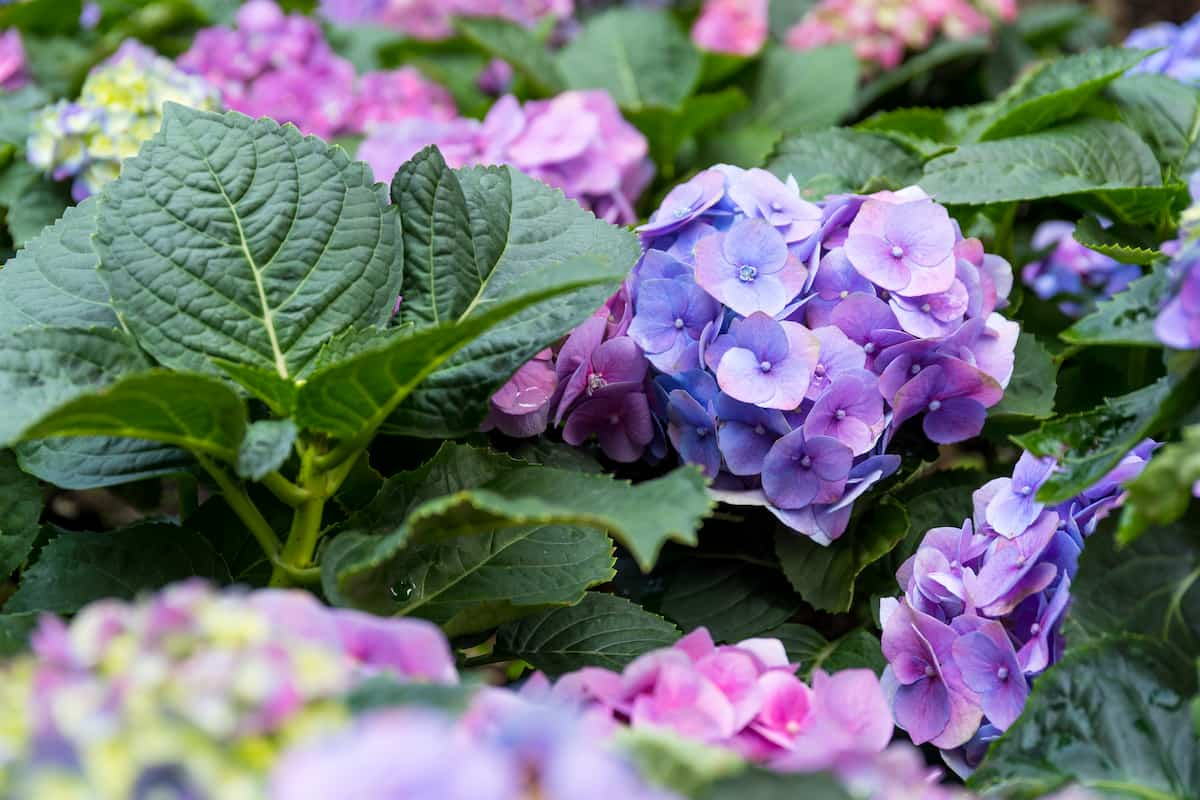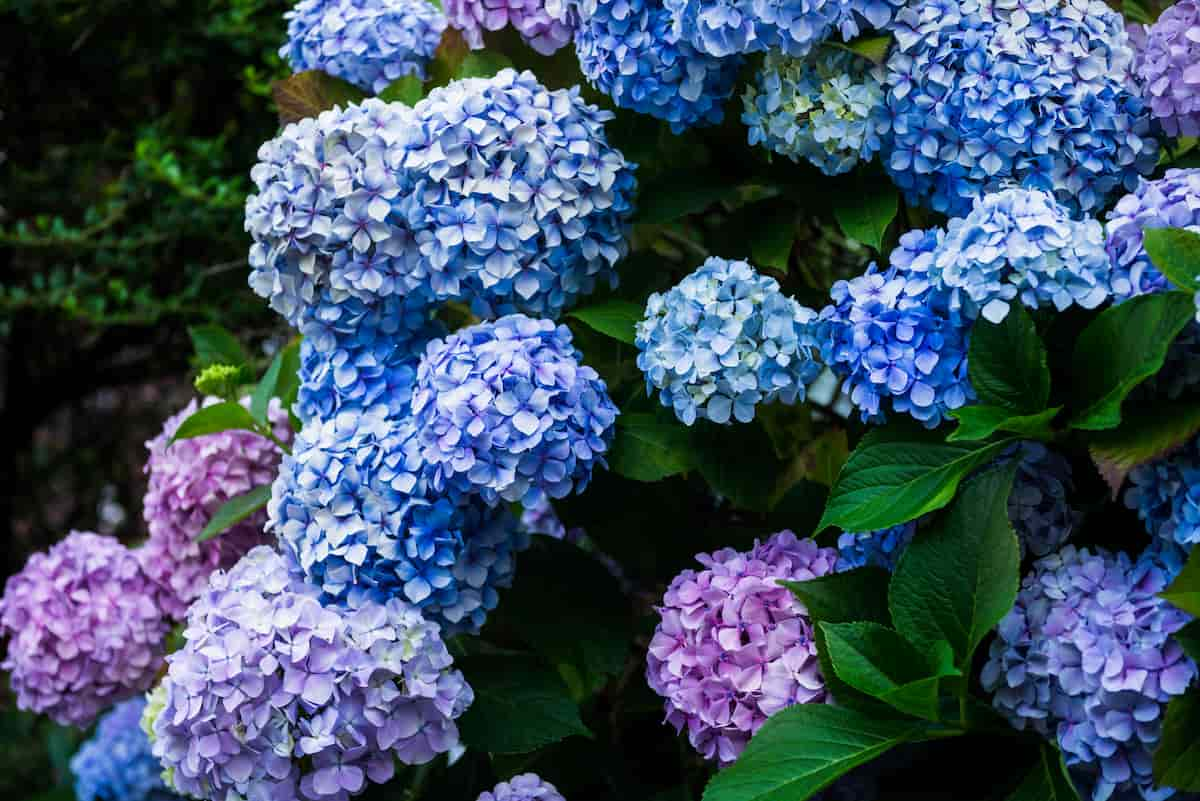Hydrangeas are beautiful flowering shrubs that produce showy blooms in various colors, from pink and blue to white and red. While these plants can be propagated from seeds or through division, growing hydrangeas from stem cuttings is a simple and effective way to increase your collection. This article will guide you through propagating hydrangeas from stem cuttings. Below we learn how to grow hydrangea from cuttings in the water and a step-by-step guide on growing hydrangeas from stem cuttings.

How to Grow Hydrangeas from Stem Cuttings
Choose the Right Time
The optimal period for taking stem cuttings is during the early summer season when the plant is exhibiting active growth. Choose a healthy, disease-free hydrangea plant and wait until it has produced new growth. Ideally, the stem cuttings should be taken in the morning or late afternoon when the temperature is cooler.
Select the Right Stem Cuttings
Choose a healthy, disease-free stem that has not recently been pruned. The stem should be green and flexible, not woody or brittle. Cut a stem about 4-6 inches long, just below a leaf node, where the leaf joins the stem. Make a clean cut with sharp pruning shears.
Prepare the Cuttings
Remove the leaves from the bottom one-third of the stem cutting. This will help to reduce moisture loss and encourage the cutting to put its energy into producing roots instead of sustaining the leaves. You can cut the remaining leaves in half to reduce the moisture lost through transpiration if the remaining leaves are large.
Apply Rooting Hormone
Dip the end of the stem cutting into rooting hormone powder, available at most garden centers. Rooting hormone helps the cutting to develop roots faster and increases the chances of success. Shake off any excess powder and tap the cutting to remove clinging powder.
Plant the Cuttings
Fill a small container or pot with well-draining potting soil. To plant a stem cutting, create a small hole in the soil using a pencil or your finger, and then insert the stem cutting into the hole. Firm the soil around the stem cutting to keep it upright. You can plant several stem cuttings in one container if they do not touch each other.
Water the Cuttings
Water the soil around the stem, cutting gently but thoroughly, ensuring the soil is moist but not waterlogged. You can use a spray bottle to water the cuttings to avoid disturbing them.
Cover the Cuttings
Cover the container with a clear plastic bag or a plastic dome to create a mini greenhouse that will help to retain moisture. This will create a humid environment that is conducive to root growth. Keep the container out of direct sunlight but in a warm, bright area.
In case you missed it: How to Propagate Plants Using Stem Cuttings: DYI Step-by-Step Guide

Monitor the Cuttings
Check the stem cuttings regularly to ensure that the soil remains moist. The cuttings need to be watered very lightly if the soil is dry. Remove any leaves that have wilted or turned yellow. This helps to prevent any disease from spreading.
Wait for the Cuttings to Root
Within a few weeks, you should see some signs of growth, such as new leaves or shoots. This indicates that the stem cuttings have been rooted. You can gently tug the stem cuttings to see if they are anchored in the soil.
Transplant the Cuttings
Once the stem cuttings have rooted and have a few sets of leaves, transplant them into larger pots or directly into the ground. If transplanting into the ground, choose a spot with well-draining soil that receives partial shade. Hydrangeas prefer soil rich in organic matter, so mix the soil with compost or well-rotted manure before planting. Water the newly transplanted cuttings thoroughly and continue to monitor them as they establish themselves.
Tips for Success
- Use healthy, disease-free plants. Avoid taking stem cuttings from plants that show signs of disease or stress.
- Choose the right stem cuttings. Select young, green stems that have not yet turned woody.
- Use clean, sharp pruning shears. Dirty or dull pruning shears can introduce disease or damage the stem.
- Apply rooting hormone. Rooting hormone helps to speed up the rooting process and increases the success rate.
- Provide a warm, humid environment. Cover the stem cuttings with a plastic bag or dome to retain moisture and create a humid environment that promotes root growth.
- Monitor the cuttings regularly. Check the soil moisture level and remove any diseased or damaged leaves promptly.
- Transplant the cuttings carefully. Handle the rooted cuttings gently and avoid disturbing the fragile roots.
In case you missed it: How to Grow Plants From Cuttings: DYI Step-By-Step Guide

Conclusion
Growing hydrangeas from stem cuttings is an easy and rewarding way to increase your collection of these beautiful flowering plants. Follow these steps carefully, and you’ll soon have a new batch of hydrangeas to enjoy in your garden or to share with friends and family.
- Feed Your Flock for Less: Top 10 Tips to Save on Chicken Feed
- Ultimate Guide to Ossabaw Island Hog: Breeding, Raising, Diet, and Care
- Hatching Answers: The Top 10 Reasons Your Chickens Aren’t Laying Eggs
- Eggs and Economics: Breaking Down the Cost of Raising Backyard Chickens
- Defend Your Greens: Proven Methods to Keep Iguanas Out of Your Garden
- Ultimate Guide to Cinnamon Queen Chicken: A Comprehensive Guide for Beginners
- Ultimate Guide to California Tan Chicken: Breeding, Raising, Diet, Egg-Production and Care
- Ultimate Guide to Marsh Daisy Chicken: Breeding, Raising, Diet, and Care
- 10 Types of Chicken Farming Businesses You Can Start for Profits